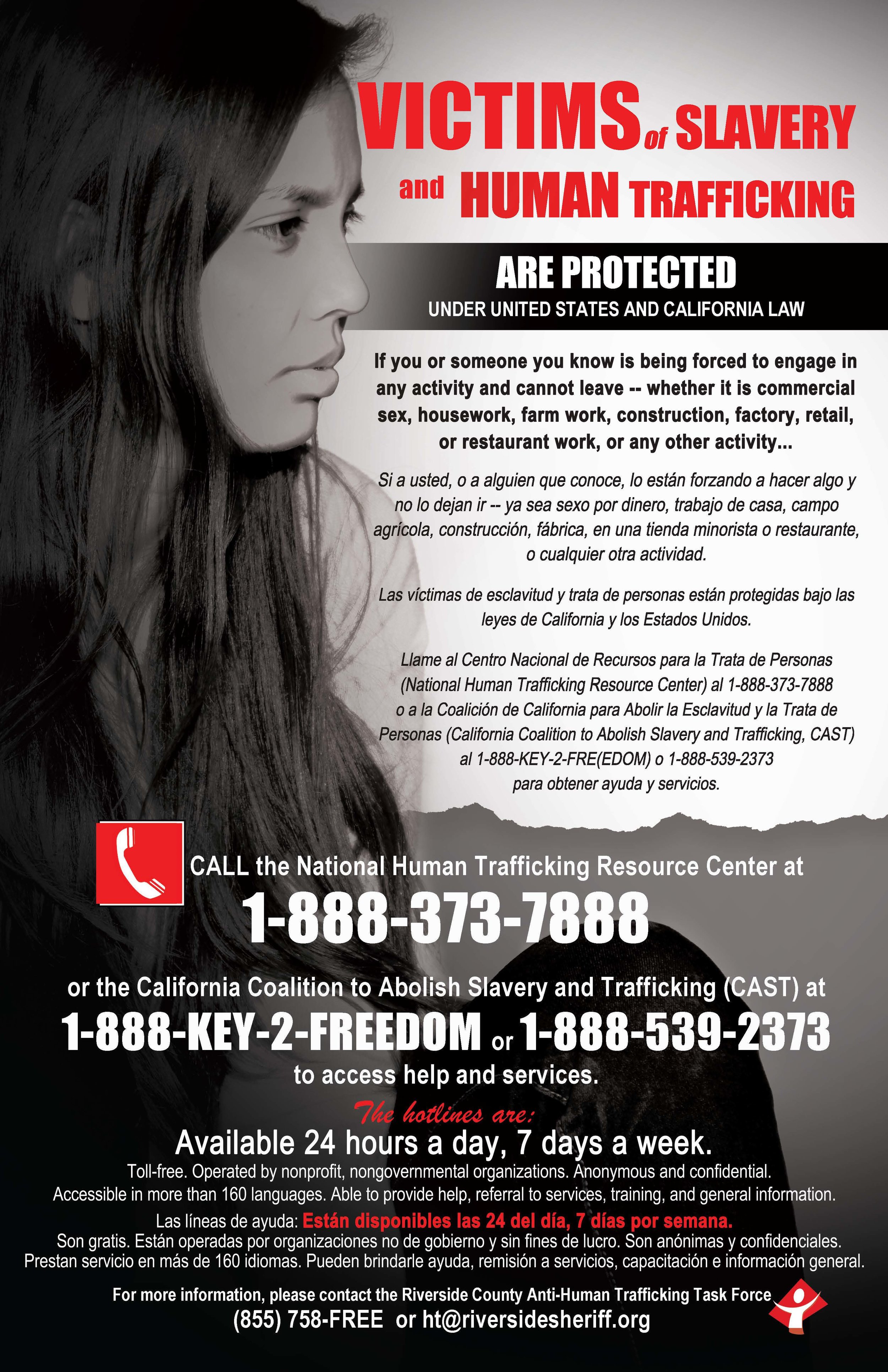Human trafficking does not discriminate: What I learned about human trafficking in my county
When I first became an advocate against human trafficking, my initial understanding of the issue was that it solely took place internationally; in a second- or third-world country; somewhere far, far away; and ultimately nothing I would ever have to worry about encountering first-hand. I wasn’t entirely wrong. Cases of human trafficking do happen all across the globe, most times in countries where poverty is extreme and the justice systems are poorly administered. However, I wasn’t entirely right either. People are also trafficked in first-world countries, where poverty may seem unnoticeable and the justice systems are strong and encourage liberty.
The United States is an independent and strong nation that fights for the freedom of all and prides itself for locking away criminals.
Who would ever think that a country so advanced and policy-minded could face the ugliness of modern slavery? Who would ever think it could happen in my own backyard?
Riverside County, the fourth largest out of all fifty-eight counties in the state of California, is home to approximately 2.4 million people. Recently, it became an increasingly popular place of residence for its convenience to places like: Big Bear Mountains, Palm Springs desert area, the Southern California beach cities, and Los Angeles. Known for its centralized location, Riverside County seems like the place to be.
What could ever be wrong?
The image above is a heat map that reflects the cases reported to the National Human Trafficking Hotline in 2016. Areas in which greater numbers of cases were reported contain more red shading. Areas in southwest, northwest, central, and northeast California contain red shading. This map only reflects cases in which the location of the potential trafficking was known. Some cases may involve more than one location.
Just like any other place in the U.S. or around the world, Riverside County, the place I was raised and call my home, struggles with cases of exploitation. It may be rewarded for its long summers and nearly perfect weather, but it is not immune to the existence of human trafficking. In fact, this year California was ranked fourth of the top worst five states for human trafficking.
Once I became more educated as an advocate, I realized that the unique thing about trafficking is that it does not discriminate. It doesn’t matter if you are rich or poor, black or white, smart or uneducated - anyone can become susceptible and fall victim to this crime. I came to understand that the realities of trafficking went so far beyond my initial scope.
Hundreds of people, including 18 alleged suspects in Riverside County, were arrested during “Operation Reclaim and Rebuild,” an annual law enforcement effort intended to combat human trafficking and the sexual exploitation of women, children, and other victims. This was the operations first coordinated statewide effort.
In the County of Riverside, there are victims to all factions of modern slavery: sex trafficking, gang trafficking, labor trafficking, agricultural trafficking, and cartel trafficking. Victims have been found working in construction, restaurants, nail salons, and massage parlors; most places where you wouldn’t naturally think to look. This is how easily trafficking goes unnoticed and becomes easy to disguise to the greater community.
An unpleasant feeling sits in my stomach seeing how close to home this issue has actually reached. But I’m grateful to know law enforcement and city officials of Riverside County are working to combat the wrongdoings.
After receiving a grant in 2010, the Riverside County Sheriff’s Department developed the Riverside County Anti-Human Trafficking Task Force (RCAHT), a combination of agencies including: Immigration and Customs Enforcement, the Riverside County District Attorney’s Office, Operation SafeHouse, Million Kids, and 60 other groups, many of which are NGOs. As an entity, it educates communities, identifies crimes, and rescues and restores victims for the purpose of putting an end to slavery. In January this year, law enforcement rescued three teenage females, all of whom were sex trafficking victims and arrested the two men involved in the act. The task force’s impact may be small, but encourages me to see that people in my neighborhood care to report crimes when they see them.
Researching more about the work my community is doing makes me wonder what the statistics are like in other places as well. No place is perfect, yet I believe every county should be equipped with some form of a task force specialized to fight modern slavery.
Smaller organizations and nonprofits may not be as effective in combating slavery when working alone, but when ideas are gathered together and when groups are pulled in to work as a team, tackling human trafficking can become a task we don’t have to be afraid of.
About the Author
Danyella Wilder is a senior at California Baptist University studying Journalism and New Media with two minors in Public Relations and Global Justice. She's thrilled to work alongside Dressember in their advocacy to spread awareness about modern-day slavery. Danyella is also an admirer of travel, an online-shopping enthusiast, and she loves going to the beach just as long as she has a great book in hand.






